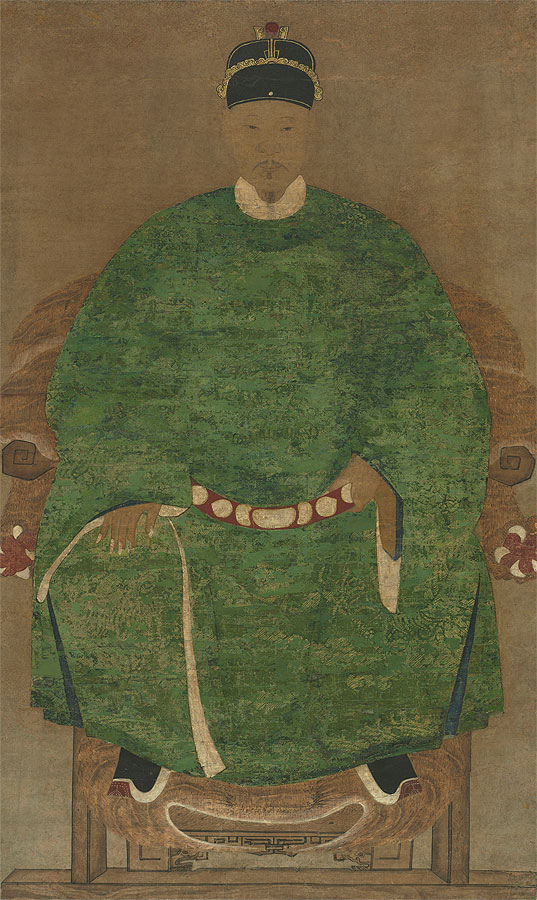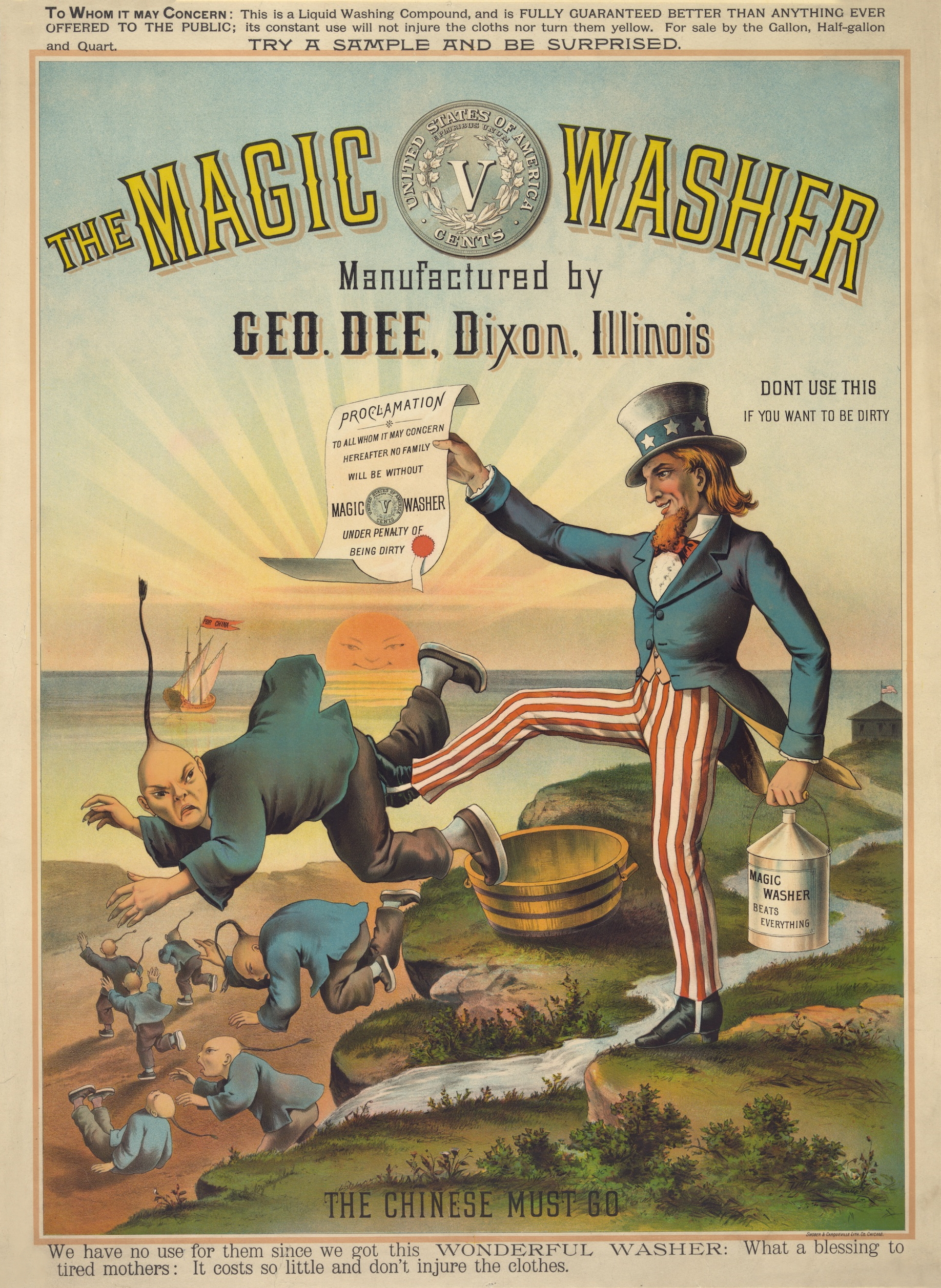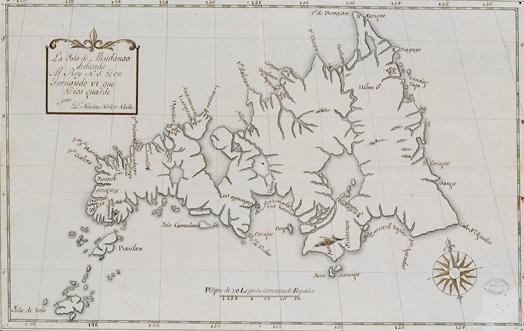|
Sangley Massacre (1662)
The Sangley Massacre was a colonialism, colonial ethnic cleansing in the Philippines in June 1662, when the Spanish Empire, Spanish governor of the Captaincy General of the Philippines ordered the killing of any Sangley (Chinese Filipinos) who had not submitted to the assembly area. Anti-Chinese sentiment had been prevalent in the Spanish Philippines since the early 17th century, resulting in the Sangley Rebellion, First (1603), Second (1609) and the Sangley Rebellion (1639), Third Sangley Rebellion (1639). In early 1662, the Southern Ming warlord Koxinga (Zheng Chenggong) defeated the Dutch colonial empire, Dutch Dutch Formosa, colonial outpost in Taiwan at the Siege of Fort Zeelandia and established the Kingdom of Tungning with himself as the ruler. On April 24, 1662, weeks after becoming the ruler of the Kingdom of Tungning, Koxinga demanded that the Real Audiencia of Manila, Spanish authorities of Manila pay tribute, or else he would send a fleet to demand it. The message arri ... [...More Info...] [...Related Items...] OR: [Wikipedia] [Google] [Baidu] |
Colonialism
Colonialism is the control of another territory, natural resources and people by a foreign group. Colonizers control the political and tribal power of the colonised territory. While frequently an Imperialism, imperialist project, colonialism can also take the form of settler colonialism, whereby settlers from one or multiple colonizing metropoles occupy a territory with the intention of partially or completely supplanting the existing population. Colonialism developed as a concept describing European colonial empires of the modern era, which spread globally from the 15th century to the mid-20th century, spanning 35% of Earth's land by 1800 and peaking at 84% by the beginning of World War I. European colonialism employed mercantilism and Chartered company, chartered companies, and established Coloniality of power, coloniality, which keeps the colonized socio-economically Other (philosophy), othered and Subaltern (postcolonialism), subaltern through modern biopolitics of Heterono ... [...More Info...] [...Related Items...] OR: [Wikipedia] [Google] [Baidu] |
Kingdom Of Tungning
The Kingdom of Tungning, also known as Tywan, was a dynastic maritime state that ruled part of southwestern Taiwan and the Penghu islands between 1661 and 1683. It is the first predominantly ethnic Han state in Taiwanese history. At its zenith, the kingdom's maritime power dominated varying extents of coastal regions in southeastern China and controlled the major sea lanes across both China Seas, and its vast trade network stretched from Japan to Southeast Asia. The kingdom was founded by Koxinga (Zheng Chenggong) after seizing control of Taiwan from Dutch rule. Zheng hoped to restore the Ming dynasty in Mainland China, when the Ming remnants' rump state in southern China was progressively conquered by the Manchu-led Qing dynasty. The Zheng dynasty used the island of Taiwan as a military base for their Ming loyalist movement which aimed to reclaim China proper from the Qing dynasty. Under Zheng rule, Taiwan underwent a process of Sinicization in an effort to consoli ... [...More Info...] [...Related Items...] OR: [Wikipedia] [Google] [Baidu] |
Anti-Chinese Violence In Asia
Anti-Chinese sentiment (also referred to as Sinophobia) is the fear or dislike of Chinese people or Chinese culture. It is frequently directed at Chinese minorities which live outside Greater China and it involves immigration, nationalism, political ideologies, disparity of wealth, the past tributary system of Imperial China, majority-minority relations, imperial legacies, and racism.Aaron LangmaidChinese Aussie rules players suffer abuse, racism ''Herald Sun'' February 21, 2013 A variety of popular cultural clichés and negative stereotypes of Chinese people have existed around the world since the twentieth century, and they are frequently conflated with a variety of popular cultural clichés and negative stereotypes of other Asian ethnic groups, known as the Yellow Peril.William F. Wu, ''The Yellow Peril: Chinese Americans in American Fiction, 1850–1940'', Archon Press, 1982. Some individuals may harbor prejudice or hatred against Chinese people due to history, racism ... [...More Info...] [...Related Items...] OR: [Wikipedia] [Google] [Baidu] |
Rebellions In The Philippines
Rebellion is an uprising that resists and is organized against one's government. A rebel is a person who engages in a rebellion. A rebel group is a consciously coordinated group that seeks to gain political control over an entire state or a portion of a state. A rebellion is often caused by political, religious, or social grievances that originate from a perceived inequality or marginalization. ''Rebellion'' comes from Latin ''re'' and ''bellum'', and in Lockian philosophy refers to the responsibility of the people to overthrow unjust government. Classification Uprisings which revolt, resisting and taking direct action against an authority, law or policy, as well as organize, are rebellions. An insurrection is an uprising to change the government. If a government does not recognize rebels as belligerents, then they are insurgents and the revolt is an insurgency. In a larger conflict, the rebels may be recognized as belligerents without their government being recognized ... [...More Info...] [...Related Items...] OR: [Wikipedia] [Google] [Baidu] |
History Of The Philippines (1565–1898)
The history of the Philippines from 1565 to 1898 is known as the Spanish colonial period, during which the Philippine Islands were ruled as the Captaincy General of the Philippines within the Spanish East Indies, initially under the Viceroyalty of New Spain, based in Mexico City, until the independence of the Mexican Empire from Spain in 1821. This resulted in direct Spanish control during a period of governmental instability there. The first documented European contact with the Philippines was made in 1521 by Ferdinand Magellan in his circumnavigation expedition, during which he was killed in the Battle of Mactan. Forty-four years later, a Spanish expedition led by Miguel López de Legazpi left modern Mexico and began the Spanish conquest of the Philippines in the late 16th century. Legazpi's expedition arrived in the Philippines in 1565, a year after an earnest intent to colonize the country, which was during the reign of Philip II of Spain, whose name has remained a ... [...More Info...] [...Related Items...] OR: [Wikipedia] [Google] [Baidu] |
Military History Of Manila
A military, also known collectively as armed forces, is a heavily armed, highly organized force primarily intended for warfare. Militaries are typically authorized and maintained by a sovereign state, with their members identifiable by a distinct military uniform. They may consist of one or more military branches such as an army, navy, air force, space force, marines, or coast guard. The main task of a military is usually defined as defence of their state and its interests against external armed threats. In broad usage, the terms "armed forces" and "military" are often synonymous, although in technical usage a distinction is sometimes made in which a country's armed forces may include other paramilitary forces such as armed police. Beyond warfare, the military may be employed in additional sanctioned and non-sanctioned functions within the state, including internal security threats, crowd control, promotion of political agendas, emergency services and reconstruction, pro ... [...More Info...] [...Related Items...] OR: [Wikipedia] [Google] [Baidu] |
Chinese Diaspora In The Philippines
Chinese may refer to: * Something related to China * Chinese people, people identified with China, through nationality, citizenship, and/or ethnicity **Han Chinese, East Asian ethnic group native to China. **''Zhonghua minzu'', the supra-ethnic concept of the Chinese nation ** List of ethnic groups in China, people of various ethnicities in contemporary China ** Ethnic minorities in China, people of non-Han Chinese ethnicities in modern China ** Ethnic groups in Chinese history, people of various ethnicities in historical China ** Nationals of the People's Republic of China ** Nationals of the Republic of China ** Overseas Chinese, Chinese people residing outside the territories of mainland China, Hong Kong, Macau, and Taiwan * Sinitic languages, the major branch of the Sino-Tibetan language family ** Chinese language, a group of related languages spoken predominantly in China, sharing a written script (Chinese characters in traditional and simplified forms) *** Standard Chines ... [...More Info...] [...Related Items...] OR: [Wikipedia] [Google] [Baidu] |
Sino-Spanish Conflicts
The Sino-Spanish conflicts were a series of conflicts between the Spanish authorities of the Spanish Empire and its Sangley Chinese residents in Spanish Philippines between the 16th and 18th centuries, which led to assassination Spanish constables and two Spanish governor generals, Spain losing Maluku, and massacres of Sangley Chinese residents. History Origin of the conflict The Moro Sultanate of Sulu wanted to become a protectorate of China because of the Spanish Empire, but the ethnic Manchu Kangxi Emperor opposed fighting Spain and rejected this proposal. Koxinga, ruler of newly founded Kingdom of Tungning, and his son Zheng Jing threatened to invade the Spanish Philippines in retaliation for the Sangley Massacre (1662), forcing the Spanish to relinquish their Maluku Islands colony and withdraw from Mindanao's Zamboanga Peninsula for decades. In the 18th century 4,000 ethnic Han Chinese residents joined the Moros to fight the Spanish and ethnic Chinese merchants shipped ... [...More Info...] [...Related Items...] OR: [Wikipedia] [Google] [Baidu] |
Negrito
The term ''Negrito'' (; ) refers to several diverse ethnic groups who inhabit isolated parts of Southeast Asia and the Andaman Islands. Populations often described as Negrito include: the Andamanese peoples (including the Great Andamanese, the Onge, the Jarawas (Andaman Islands), Jarawa, and the Sentinelese) of the Andaman Islands, the Semang peoples (among them, the Batek people) of Peninsular Malaysia, the Maniq people of Southern Thailand, as well as the Aeta people, Aeta of Luzon, the Ati people, Ati and Suludnon, Tumandok of Panay, the Mamanwa of Mindanao, and about 30 other officially recognized ethnic groups in the Philippines. Etymology The word ''Negrito,'' the Spanish diminutive of ''negro'', is used to mean "little black person." This usage was coined by 16th-century Spanish Catholic Church and the Age of Discovery, missionaries operating in the Philippines, and was borrowed by other European travellers and colonialists across Austronesia to label various peoples pe ... [...More Info...] [...Related Items...] OR: [Wikipedia] [Google] [Baidu] |
Binondo
Binondo (; ) is a district in Manila and is referred to as the city's Chinatown. Its influence extends beyond to the places of Quiapo, Manila, Quiapo, Santa Cruz, Manila, Santa Cruz, San Nicolas, Manila, San Nicolas and Tondo, Manila, Tondo. It is the oldest Chinatown in the world, established in 1594 by the Spaniards as a settlement near Intramuros but across the Pasig River for Catholic Chinese; it was positioned so that the colonial administration could keep a close eye on their migrant subjects. It was already a hub of Chinese commerce even before the Spanish colonial period. Binondo is the center of commerce and trade of Manila, where all types of business run by Chinese Filipinos thrive. Noted residents include Saint Lorenzo Ruiz, the Filipino protomartyr, and Venerable Mother Ignacia del Espiritu Santo, founder of the Congregation of the Religious of the Virgin Mary. Etymology Numerous theories on the origin of the name "Binondo", and that of "Tondo", its neighborin ... [...More Info...] [...Related Items...] OR: [Wikipedia] [Google] [Baidu] |
Intramuros
Intramuros () is the historic walled area within the city of Manila, the capital of the Philippines. It is administered by the Intramuros Administration with the help of the city government of Manila. Intramuros comprises a centuries-old historic district, entirely surrounded by fortifications, that was considered at the time of the Spanish Empire to be the entire City of Manila. Other towns and ''arrabales'' (suburbs) located beyond the walls that are now districts of Manila were referred to as ''extramuros'', Spanish language, Spanish for "outside the walls", and were independent towns that were only incorporated into the city of Manila during the early 20th century. Intramuros served as the seat of government of the Captaincy General of the Philippines, a component realm of the Spanish Empire, housing the colony's governor-general from its founding in 1571 until 1865, and the Real Audiencia of Manila until the end of Spanish rule during the Philippine Revolution of 1898. Th ... [...More Info...] [...Related Items...] OR: [Wikipedia] [Google] [Baidu] |
Mindanao
Mindanao ( ) is the List of islands of the Philippines, second-largest island in the Philippines, after Luzon, and List of islands by population, seventh-most populous island in the world. Located in the southern region of the archipelago, the island is part of an island group of the same name that also includes its adjacent islands, notably the Sulu Archipelago. According to the 2020 census, Mindanao had a population of 26,252,442, while the entire island group had an estimated population of 27,021,036. Mindanao is divided into six administrative regions: the Zamboanga Peninsula, Northern Mindanao, the Caraga region, the Davao Region, Davao region, Soccsksargen, and the autonomous region of Bangsamoro. According to the 2020 census, Davao City is the most populous city on the island, with 1,776,949 people, followed by Zamboanga City (pop. 977,234), Cagayan de Oro (pop. 728,402), General Santos (pop. 697,315), Butuan (pop. 372,910), Iligan (pop. 363,115) and Cotabato City (pop. ... [...More Info...] [...Related Items...] OR: [Wikipedia] [Google] [Baidu] |








